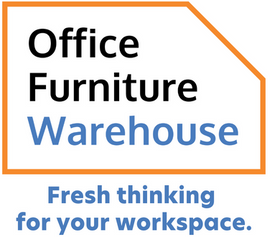Workplace burnout is becoming a common theme in today’s working life. The accumulation of unresolved stress, overworking and a lack of job satisfaction coupled with personal demands from family and finances can all lead to workplace burnout. Burnout occurs when workers feel mentally, physically and emotionally drained due to constant demands at work. It appears in the
form of emotional exhaustion, cynicism and ineffectiveness in the workplace, and by constant negative responses to stressful workplace conditions.
Some of the common symptoms of someone who is struggling with workplace burnout include chronic headaches or stomach issues, self-doubt, self-isolation, reduced efficiency and irritability. Burnout can cause someone to want to move away from work or their friends and family, or even develop an escapist mentality. When symptoms worsen this can look like chronic fatigue, sadness or even depression.
The events of the last year and ongoing fallout from Covid-19 has been a huge contributor to pockets of the workforce, and there are many reports of teachers, health workers or frontline staff feeling this way. For office workers this stress may not be as intense, but the condition is not new to anyone who is in the workforce.
Burnout not only impacts the employee, it can affect the rest of the team and the organisation as a whole. Mental health has a direct correlation to productivity so it is in an employer’s best interest to create healthy work conditions. Burnout can lead to higher levels of job dissatisfaction, ineffectiveness, conflict, absenteeism and staff turnover. Prolonged periods of burnout can also lead to serious health concerns, weakened immunity and chronic fatigue so it is important to be proactive when finding a solution for yourself or your team members.
There are a number of ways that employees and employers can work together to improve the emotional, physical and mental wellbeing within the workplace. Here are our 5 tips for avoiding workplace burnout and what to do if it arises:
1. Encourage Physical Activity
There are a range of mental and physical health benefits associated with exercise and movement. Staying active and taking time to move around throughout the work day can dramatically improve a person’s overall mood and keep them energised and happy. Taking time to go for a short walk at lunch or going for a jog after work will have a profoundly positive impact on mental wellbeing.
2. Implement Healthy Workplace Initiatives
If left unresolved, the consequences of stress and dissatisfaction can have a domino effect that ripples throughout an entire organisation. A healthy work environment is one that supports the mental, physical and emotional needs of all workers. Fostering healthy workplace initiatives such as ‘Casual Fridays’, office exercise challenges or work from home arrangements can be a great way to boost workplace morale and make staff feel appreciated and supported in the
workplace.
3. Encourage Breaks
If the demands of work become too intense, staff may find themselves sacrificing their own free time. Taking breaks and scheduling free time is important for everyone. A good way to reduce the risk of burnout is by creating a healthy work-life balance and making sure to allow sufficient free time away from the workplace. Having time to relax and recharge gives employees time to
pursue their own interests or spend time with their friends and family. In addition, breaks allow employees to regain their energy, which in turn can have a positive impact on their productivity.
4. Ensure Effective Task Management
A key symptom of burnout is feeling overwhelmed or ‘snowed under’ therefore it can be beneficial to be realistic when assigning or committing to tasks. Understanding and setting limits around workload boundaries is a good place to begin. If workers feel overburdened by the demands of work, the prioritisation and delegation of tasks is a good way to effectively manage workload and alleviate stress. By seeking more control over their work schedules, staff can
begin to find a more reasonable and achievable workday. Allowing for variation and flexibility in work can prevent feelings of stagnancy and demotivation. Managers can also help staff by providing clear expectations, ongoing training and enforcing reasonable working hours.
5. Seek Support
Burnout is a gradual process that can worsen if not resolved so it is important to seek help and make positive changes as soon as concerns arise. Opening up to friends and family members is a good place to start. The best way to create change and request better support for workplace burnout is to communicate honestly and openly with a manager.
Managers have an important role to play in supporting their staff and assisting them overcome any concerns or challenges that may arise. Although it may feel uncomfortable to seek support, it is best to communicate concerns sooner rather than later so that changes can be made and a solution can quickly be found.
Everyone copes with burnout differently but it is important to take it seriously if it does arise. Having an awareness of how it can manifest, the outward symptoms and the prevention strategies are key to achieving and maintaining a happy and productive team.
Wherever you are in your working journey, we’re here to help you grow and help your work be great.
Check out our range of office furniture for your home office or commercial space, contact our team if you have any questions, and make this year your most productive yet!


